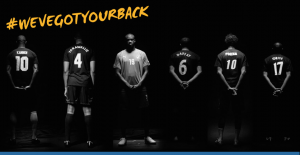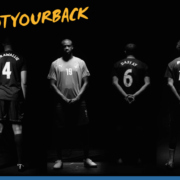 Earlier this month Christopher Graves, CEO for Ogilvy Public Relations*, wrote that “managing Ebola will take powerful communication.” It’s a sensible and thoughtful blog about a horrible disease that is such a public health nightmare for the people of West Africa. His point that the “world’s scariest outbreak of Ebola […] may come down to communications” really struck a chord with me, as did his methodical unpacking of the tough barriers that messaging needs to overcome to tackle and help stop this particular outbreak. It’s recognition that complex diseases require solutions that go beyond the standard portfolio of responses.
Earlier this month Christopher Graves, CEO for Ogilvy Public Relations*, wrote that “managing Ebola will take powerful communication.” It’s a sensible and thoughtful blog about a horrible disease that is such a public health nightmare for the people of West Africa. His point that the “world’s scariest outbreak of Ebola […] may come down to communications” really struck a chord with me, as did his methodical unpacking of the tough barriers that messaging needs to overcome to tackle and help stop this particular outbreak. It’s recognition that complex diseases require solutions that go beyond the standard portfolio of responses.
While HC3 does not focus on Ebola, the disease highlights key challenges in the public health займ на любую карту communication realm that the project seeks to enrich, and it’s certainly been trending as a discussion topic. I first read about how local artists are using music to help people protect against and prevent the spread of Ebola on HC3’s online platform,Springboard. Since then, I’ve come across several stories about songs used as a means to raise awareness of the disease. The Atlantic’s Uri Friedman’s “How to make a hit song about Ebola” is well worth the read, as is one that NPR recently posted, “’Shadow’ and ‘D-12’ sing an infectious song about Ebola.” Both stories use multi-media to tell important stories for their intended audiences and both do what is so important in the field of health communications – they amplify the messages as part of their storytelling.
The last few weeks have presented health agencies with unusually acute challenges around how best to design and deploy communications and media interventions that can make a real and rapid difference to the progression of the Ebola outbreak. In conversations with colleagues working in Guinea and Sierra Leone, it’s clear that despite the recent proliferation of messaging and other social mobilization efforts by multiple agencies, the complexities of a dynamic information environment continue to play a powerful part in determining to what extent people and communities engage with treatment and/or behavior change options. It is if course well recognized that information about prevention and treatment of spread is vital, and that rumor, misinformation, superstition and cultural factors (that thrive on word of mouth information flow) have all been significant obstacles to containing the epidemic. As the key messages about prevention and treatment options are relatively simple and finite, and as campaigns reach more and more of the population, the key test will be to see whether saturation messaging is sufficient to reverse the tide of the epidemic.
Graves specifically advocates for the kinds of messaging that plays out well as drama and storytelling, citing research that shows how audiences empathize with characters and how this can drive behavior change. Yet he recognizes that “creating such stories takes time”, and even more importantly that a “Western style of doing a media campaign … is not what is needed on the ground. What’s needed is really direct communication that begins by identifying key community leaders.” I would also add the media as an important actor in direct communication, and in particular radio, which is still how many people get their information.
I’ve been working with Alison Campbell, Internews’ Global Initiatives Director, on the organization’s Ebola response, and she reminded me that in countries like those affected by Ebola in West Africa, word of mouth through trusted social networks clearly has enormous potential to affect the progress of the epidemic for better or worse. “In remote ‘information ecosystems’ bad information can travel faster than good information merely by travelling through a trusted network, or by emanating from a locally trusted source,” she said, and added that it was “worth noting that connectivity (mobile, internet, SMS) now acts as a powerful amplifier of the grapevine.” Getting the message right does not necessarily mean it will be accepted or acted upon. As Campbell noted: “If you want to transform the nature of the grapevine (real or virtual), it becomes really important for health communicators to pay as much attention to community perceptions of the source and transmission of the information as to the integrity of the message.” When it comes to radio, its unique ability to mimic the power of the grapevine “enhances, illustrates and engages action by bringing local voices, stories, advice and news into people’s homes in the vernacular they understand, from local sources, peers and community members and/or through trusted interlocutors ranging from leaders to popular on-air hosts.”
Engage the media. Work with journalists and talk show hosts and support them in understanding the disease and the science behind prevention and treatment. Use the media to amplify the message, dispel rumors and superstitions, and stop the spread of misinformation, which in this instance, can only add to the deadly spread of the disease.
Reprinted with permission from the Health Communication Capacity Collaborative on September 4, 2014
 Ebola is a threat to people, health systems and economies around the globe. But West African communities in particular are being hammered by Ebola as a result of already-strained healthcare systems, mistrust of healthcare workers and fear and stigmatization of those infected. One major aspect to halting the epidemic is to ensure that healthcare workers, patients, and the public receive accurate information that dispels myths, promotes prevention methods and outlines resources for those affected by Ebola.
Ebola is a threat to people, health systems and economies around the globe. But West African communities in particular are being hammered by Ebola as a result of already-strained healthcare systems, mistrust of healthcare workers and fear and stigmatization of those infected. One major aspect to halting the epidemic is to ensure that healthcare workers, patients, and the public receive accurate information that dispels myths, promotes prevention methods and outlines resources for those affected by Ebola.



